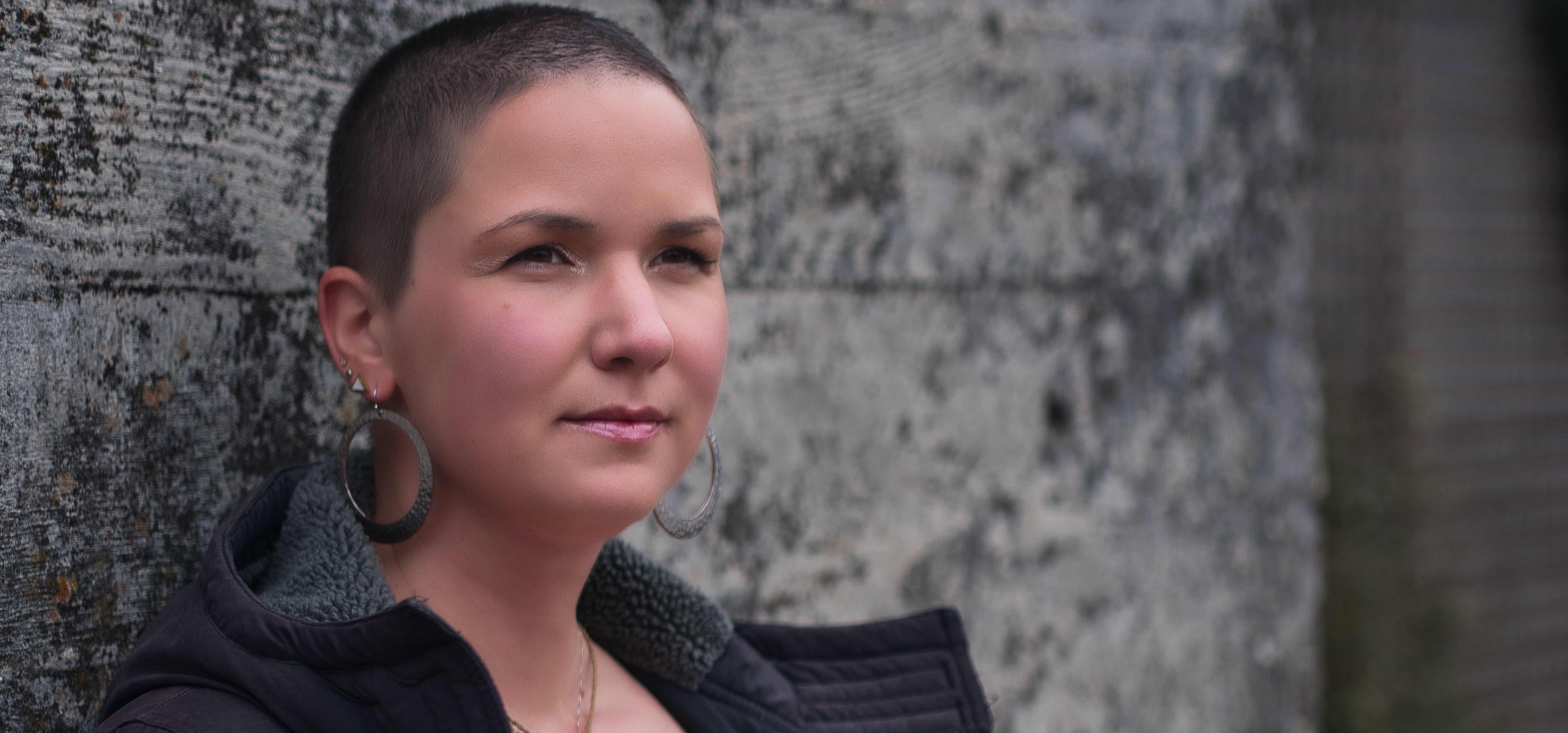
Introduction
Disability is an abstract concept many non-disabled people cannot fathom. People with disabilities might have a broad spectrum of limitations; they can be any age, gender, and have diverse backgrounds. Their disability can be visible in the shape of a wheelchair, cane, or brace; or it could be invisible – not to be seen from the outside – like chronic pain. Some people are born with a disability; others acquire one throughout life. Disability can be the consequence of a chronic illness – physical as well as mental illnesses can be disabling – but not all chronic illnesses lead to disabilities, and not every disability has an underlying chronic condition.
A substantial part of the world’s population is living with a disability. Worldwide, 15 percent of all people are disabled (Burns, 2016; World Health Organization, 2011). The number rises to 20 percent if we only talk about the Western hemisphere (Ellis, 2016) and according to the Center for Disease Control and Prevention (2019), more than a quarter of the American population is living with a form of disability. People with disabilities, therefore, compile one of the largest minorities around the globe. However, disabled people are still underrepresented by the media (Ellis & Goggin, 2015; United Nations, n. d.), and disability advocates and organizations (Disability Rights Education & Defense Fund, n. d.), academics (Barnes, 1992; Gold & Auslander, 1999), and disabled writers (Powell, 2018) alike criticize news outlets for their ongoing inaccurate depiction of the community.
Newspapers, TV, and Social Media shape our worldview, define our sense of right and wrong (Zhang & Haller, 2013), but also influence how we see one another. Journalists are the key players concerning prejudices towards disabled people. Whether they help or harm the community largely depends on their portrayal of disabled people in media, and oftentimes, journalists aren’t aware of their essential role in influencing the public’s opinion about disability.
Due to this unawareness, people with disabilities are predominantly portrayed in a stereotypical way (Ross & Lester, 2011; Shelton, 2017), most commonly to inspire non-disabled people (Haller & Preston, 2016) with their achievements “despite their disability.” This hero-like depiction of disabled peoples’ everyday lives has motivated activist Stella Young (2014) to give a TED talk during which she coined the term “inspiration porn.” Since then, “inspiration porn” has become a synonym for bad disability reporting. Besides the hero stereotype, many more exist, and all of them are harmful to the disability community.
One particular group that is commonly misunderstood is the community of people living with invisible disabilities. Many non-disabled people cannot comprehend that some disabled people might not show any apparent signs of disability. This lack of understanding leads to Social Media sites filled with hurtful comments, for example, notes put on disabled peoples’ cars for using an accessible parking spot while they can walk from the car to the supermarket (Ruiz, 2017).
This is where journalists become so important. They have the power to improve reporting on disability in and by the media in order to represent people with disabilities, but especially people with invisible disabilities, accurately. Misconceptions about disabled people have caused a lot of damage to the disability community, which, even with significant effort and decades of work, could not have been undone, and this excludes many disabled people from a society they have so much to offer to. And the only way to change these misconceptions is by involving people who know best: journalists with disabilities.
Facts
Disability as a subject in media:
– Less than 1 percent of TV shows featured characters with disabilities in 2012 (Gay & Lesbian Alliance Against Defamation, 2012), and since then, this number has only risen to 2.1 percent in 2018 (Gay & Lesbian Alliance Against Defamation, 2019).
– 95 percent of the actors playing a disabled person on TV were not disabled themselves (Woodburn and Kopić, 2016).
Disabled journalists:
– Spilsbury (2017) published one of the few reports available that showed disabled journalists made up 14 percent of all journalists in the UK in 2017.
Representation of disability by the media:
– Many people view disability as something undesired or abnormal (Shakespeare, 1994) and the disabled person as being imperfect or faulty, inferior to non-disabled people, someone who needs fixing (Haller & Ralph, 2001). This phenomenon is called ableism and is defined as a “set of often contradictory stereotypes about people with disabilities that acts as a barrier to keep them from achieving their full potential as equal citizens in society” (Pelka, 1997, p. 3). In simple words, ableism means that a non-disabled person mistreats or discriminates a person with a disability based on misconceptions. Journalistic coverage of disability-related topics and the models they use, therefore, can contribute to ableism, which in turn might cause people with disabilities to become “socially invisible and marginalized” (Davis, 2005, p. 190).
– When Burns and Haller (2015) analyzed articles covering the National Disability Insurance Scheme (NDIS) in Australia, they found that 74 percent relied on models in the traditional category of media representation of disability – most prevalently the social pathology model – Disability as a disadvantage – (Clogston, 1990). Another study shows that if the sensitive topic assisted suicide was discussed, the media used the “better-off-dead”-frame portraying disability as a reason for people to die (Haller & Ralph, 2001). According to Pirsl and Popovska (2013), on the other hand, the medical model – Disability as an illness – (Clogston, 1990) was the predominant frame used with a primary focus on the person’s limitations rather than the person itself.
– Another very common theme is the media making disabled people look like superheroes. While this stereotype was suggested to have a slightly positive effect on the self-perception of disabled people by a few academics (Zhang & Haller, 2013), most research points towards a negative outcome when minorities are portrayed in a too heroic light (Grue, 2016); it is inaccurate and unbalanced, and doesn’t reflect reality of people living with disabilities. The supercrip depiction is commonly seen as “inspiration porn,” where a disabled person’s everyday activities are viewed as inspiring merely because they achieve those “even though they are disabled.” Those narratives are used to make a non-disabled audience feel more content with their lives because “at least they are not disabled” (Cameron, 2018; McAskill, 2016), which is offending and damaging to the disability community.
Language matters:
Person-first versus identity-first
People-first language vs. identity-first language
“People with disabilities may prefer people-first language.”
This is an example of people-first language that focuses on the person and not his or her disability. Some people with disabilities prefer people-first language that depicts them as a human first, and as being disabled second (National Center on Disability and Journalism, 2018).
“An autistic person may prefer identity-first language.”
This sentence gives an example of identity-first language which centers around the disability as part of a person’s identity. Many autistic people prefer this approach (Ryan, 2018).
Metaphorical usage of inappropriate disability-related words
Frequently, disability-related words are used as an insult. For example, words like “retard” or “psycho” may be shouted at someone who acts unreasonable, or not to the liking of others. Using disability-related words as insults, jokes, or metaphors fuels prejudices and misconceptions about disability.
Typical inappropriate language
Even as early as in the 90s, researchers found terms that imply living with a disability means a life in agony such as “suffering from” aren’t acceptable (Auslander & Gold, 1999). However, especially the aforementioned is ever-present in newspapers when reporting on chronic illness and disability.
Another term frequently used is “wheelchair-bound.” Raul Krauthausen (n. d), a German disability activist and wheelchair-user, responded (translated from German): “If you ever actually see someone bound to a wheelchair, please cut him loose.” Most people that use wheelchairs don’t see those as limitations – quite the opposite. A wheelchair is a resource for disabled people to take part in everyday activities. Wheelchairs provide independence, and people are not bound to them.
More obvious absolutely unacceptable words are cripple, retard, midget, psycho, freak, mongoloid.
If in doubt, always ask the person you report on about their language choice.
Helpful language style guides:
Accessibility:
Video:
Including closed captions for a deaf audience and descriptive audio for the blind viewers shouldn’t be a question; accessibility is a right (Greco, 2016)! And films about disabilities or documentaries that target these people as an audience simply cannot lack accessibility features. However, most courses for filmmakers don’t teach how to create accessible films, even though it is not hard to make the necessary changes to the filmmaking process to construct the space for descriptive audio or closed captions, but it needs to be thought of before and while filming (Fresco, 2017).
Podcasts:
Transcripts are a must!
Images:
ALT texts with accurate image descriptions should be provided.
My requirements:
I take my responsibility to represent my community in an accurate, non-stereotypical way very seriously. Therefore, I reflect on the words I use, discuss with my interviewees how they prefer to be represented, and research proper language and representation in depth. Unfortunately, due to the time pressure newspapers might face, my articles often get edited without my approval. In the worst cases, my name is then related to an article featuring the person with a disability as a suffering victim, inspirational hero, or depicts them otherwise inaccurately overall. This is not only hurtful for my reputation but also severely harms my community. Words have consequences. They matter. Especially when writing about disability.
This being said, please do not change my articles to inspiration porn by making everyday activities non-disabled people do look like they are inspiring because it’s a disabled person doing them. Please don’t add dramatic language by using words like “suffering from” unless the person with the disability uses this expression him- or herself.
If you do significantly alter the article (everything other than spelling or grammar), please send me a copy before publication, so that I can make sure it still is in line with my mission and motivation. I am more than happy to provide additional text or information if needed. Just contact me.
About me:
Karina is an award-winning filmmaker and journalist from Germany currently residing in the US. She gained significant scientific knowledge through studying laboratory technology and working in research for several years. Due to a chronic illness and invisible disability, she found her passion for media production and has been working as a freelance journalist since 2013. In 2019, she finished her Master’s degree by producing a feature-length documentary called ”We Are Visible” to highlight how to improve reporting on people with disabilities in media. ”We Are Visible” has won several movie awards, while Karina graduated with distinction from her journalism program (MA international journalism for media professionals). Karina’s main focus is to represent people with illnesses and disabilities accurately in the media to reduce biases and stereotypes. She thinks disabled journalists should be reporting on disability.
Sources:
Auslander, G. K. and Gold, N., 1999. Disability terminology in the media: A comparison of newspaper reports in Canada and Israel. Social Science & Medicine, 48(10), pp. 1395-1405.
Barnes, C., 1992. Disabling imagery and the media. Halifax: Ryburn Publishing.
Burns, S., 2016. Diversity and journalism pedagogy: exploring news media representation of disability. Journalism & Mass Communication Educator, 71(2), pp. 220-230.
Burns, S. and Haller, B., 2015. The politics of representing disability: Exploring news coverage of the Americans with Disabilities Act and the National Disability Insurance Scheme. Asia Pacific Media Educator, 25(2), pp. 262-277.
Cameron, L. N., 2018. Inspiring or Perpetuating Stereotypes?: The Complicated Case of Disability as Inspiration (Doctoral dissertation, Carleton University).
Center for Disease Control and Prevention, 2019. Disability Impacts All of Us. Center for Disease Control and Prevention. Available at: https://www.cdc.gov/ncbddd/disabilityandhealth/infographic-disability-impacts-all.html [Accessed: September 16, 2019]
Clogston, J. S., 1990. Disability coverage in 16 newspapers. Avocado Press.
Davis, N. A., 2005. Invisible disability. Ethics, 116(1), pp. 153-213.
Disability Rights Education & Defense Fund, n. d. Media and Disability. Disability Rights Education & Defense Fund. Available at: https://dredf.org/media-disability/ [Accessed: July 31, 2019]
Ellis, K., 2016. Disability media work: Opportunities and obstacles. Springer.
Ellis, K. and Goggin, G., 2015. Disability and the Media. Macmillan International Higher Education.
Fresco, P. R., 2017. Accessible Filmmaking in Documentaries.
Gay & Lesbian Alliance Against Defamation, 2012. Where We Are On TV Report: 2011 – 2012 Season. Gay & Lesbian Alliance Against Defamation. Available at: https://www.glaad.org/publications/whereweareontv11 [Accessed: August 19, 2019]
Gay & Lesbian Alliance Against Defamation, 2019. Where We Are On TV Report: 2018 – 2019 Season. Gay & Lesbian Alliance Against Defamation. Available at: https://glaad.org/files/WWAT/WWAT_GLAAD_2018-2019.pdf [Accessed: August 19, 2019]
Gold, N. and Auslander, G., 1999. Newspaper coverage of people with disabilities in Canada and Israel: An international comparison.
Greco, G. M., 2016. On accessibility as a human right, with an application to media accessibility. In Researching audio description (pp. 11-33). Palgrave Macmillan, London.
Grue, J., 2016. The problem with inspiration porn: A tentative definition and a provisional critique. Disability & Society, 31(6), pp. 838-849.
Haller, B. and Preston, J., 2016. Confirming normalcy: ‘Inspiration porn’ and the construction of the disabled subject?. In Disability and Social Media (pp. 63-78). Routledge.
Haller, B. and Ralph, S., 2001. Not worth keeping alive? News framing of physician-assisted suicide in the United States and Great Britain. Journalism Studies, 2(3), pp. 407-421.
Krauthausen, R., n. d. Lieber losbinden. Leidmedien. Available at: https://leidmedien.de/statements/lieber-losbinden/ [Accessed: August 5, 2019]
McAskill, A., 2016. “Come and see Our Art of Being Real”: Disabling Inspirational Porn and Rearticulating Affective Productivities. Theatre Research in Canada/Recherches théâtrales au Canada, 37(2).
National Center on Disability and Journalism, 2018. Disability Language Style Guide. Walter Cronkite School of Journalism and Mass Communication, Arizona State University. Available at: https://ncdj.org/style-guide/ [Accessed: August 5, 2019]
Pelka, F., 1997. The ABC-CLIO companion to the disability rights movement. Abc-Clio Incorporated.
Pirsl, D. and Popovska, S., 2013. Media mediated disability: How to avoid stereotypes. International Journal of Scientific Engineering and Research (IJSER) Volume, 1, pp. 42-45.
Powell, R., 2018. What Hollywood Gets Wrong About Disabilities. HuffPost. Available at: https://www.huffpost.com/entry/opinion-powell-what-hollywood-gets-wrong-about-disabilities_n_5a9ef0ffe4b0d4f5b66b1882 [Accessed: July 31, 2019]
Ross, S. D. and Lester, P. M., 2011. Images that injure: Pictorial stereotypes in the media. ABC-CLIO.
Ruiz, A., 2017. Woman Who Suffers From MS Gets Nasty Note on Windshield. Chicago 5. Available at: https://www.nbcchicago.com/news/local/Nasty-Note-Left-on-Womans-Windshield-For-Parking-in-Handicap-Spot-459824343.html [Accessed: July 31, 2019]
Ryan, M., 2018. I Don’t Have Autism. I Am Autistic. Lenny. Available at: https://www.lennyletter.com/story/i-dont-have-autism-im-autistic [Accessed: August 5, 2019]
Shakespeare, T., 1994. Cultural representation of disabled people: dustbins for disavowal?. Disability & Society, 9(3), pp. 283-299.
Shelton, S., 2017. Not an Inspiration Just for Existing: How Advertising Uses Physical Disabilities as Inspiration: A Categorization and Model. In Conference: AEJMC Southeast Colloquium (pp. 1-30).
Spilsbury, M., 2017. Diversity in Journalism. National Council for the Training of Journalists. Available at: https://www.nctj.com/downloadlibrary/DIVERSITY%20JOURNALISM%204WEB.pdf [Accessed: May 9, 2019]
United Nations, n. d. Disability and the Media. United Nations. Available at: https://www.un.org/development/desa/disabilities/resources/disability-and-the-media.html [Accessed: September 17, 2019]
Woodburn, D. and Kopić, K., 2016. The Ruderman White Paper: On Employment of Actors with Disabilities in Television. The Ruderman Family Foundation, July.
Young, S., 2014. I’m not your inspiration, thank you very much. TED. Available at: https://www.ted.com/talks/stella_young_i_m_not_your_inspiration_thank_you_very_much?language=en [Accessed: July 17, 2019]
Zhang, L. and Haller, B., 2013. Consuming image: How mass media impact the identity of people with disabilities. Communication Quarterly, 61(3), pp. 319-334.

